David Gortner reached out via the Norton Commando Facebook group (he is also a very active user – gortnipper on the Access Norton Forum) with some questions about the Motogadget mo.lock.
I have posted an article up, which covers wiring the mo.switch and how to fit it on a positive earth bike, but I thought it might be rather fun to map out the electrical on David’s bike.
What a Bike
This is my kind of machine – cafe racer style, from a distance it looks stripped out and minimalist.
But on close inspection, it’s actually far from it – lots of nice upgrades to bring the bike up to date.
Upgrades
It’s hard to know quite where to start on this machine.
Lansdowne dampers, Ikon shocks, cNw Brembo brake, Excel shouldered WM3 rims, Jim Comstock’s head steady, Steve Maney style exhaust, polished aluminium tank and side covers aside, I am going to focus on some of the electrical upgrades that make this bike so interesting.
Electric Starter

Matt Rambow and his team at Colorado Norton Works make some beautiful stuff, and their Electric Start Conversion for the pre-MK3 Norton Commando is no exception.
The cNw kit, found here is actually very reasonably priced at $2,495 if you consider that it includes a belt drive primary.
The pics are from Matt’s site (not David’s bike)
As always with Colorado Norton Works, the quality of the fit and finish is second to none.
If you don’t want a highly polished finish, there are option for satin and matt black too.
Matt supplies a starter button with his kit, as the quality of the original switches were dubious when they were new. That makes it difficult for Matt to support, and guarantee the reliability, hence shipping his own.
David has also replaced the left handlebar switch too, which I will cover further on.
Electronic Ignition

David is using the Tri-Spark electronic ignition – they have been around since about 2009.
You can find the Tri-Spark website here.
Tri-Spark get a bad press for reasons I have gone into in an article here – personally I have never, ever had an issue with them – always reliable, great customer service, and full of some great features.
They are my personal preference for electronic ignitions, and I recommend them to anyone thinking of moving based on my own great experience.
The Tri-Spark unit is a one box solution – all the gubbins are mounted inside the points cover – no additional black box to try and hide under the tank, and very, very simple to connect up.
The wiring is as follows:
- Red wire – this is the positive feed to the Tri-Spark unit. Most people attach this wire to one of the two fixing posts inside the points cover. I would personally recommend running an additional wire up to the coils, I always draw my wiring diagrams in this way to cover this recommendation.
- Black/Yellow – this is the negative feed to the Tri-Spark unit. This joins in to the White/Blue wire that used to feed the Ballast Resistor that you are removing. As standard, this goes up to the big connector block under the tank, where it’s joined to the White/Yellow that is the kill switch on your left side handlebar switch cluster.
- Black/White – this is the negative supply FROM the Tri-Spark TO the coils.
As with most electronic ignitions, from a wiring perspective, the most important thing to note is that you will be moving from a pair of coils that are wired in parallel to series.
Originally, the points make and break the positive (earth) side of each coil in turn.
The Tri-Spark electronic ignition system uses a concept called “wasted spark” – with the two coils wired in series, they are energized together on every rotation of the camshaft.
You’ll note in the wiring diagrams below that the Ballast Resistor and Condensers have been removed as part of the conversion to Electronic Ignition.
Two major benefits of the Tri-Spark:
- a very low operating voltage – as low as 8 volts means your bike will still run with a less than optimal battery and charging system
- circuitry performs the electronic equivalent of advance and retard to make the bike easier to start and stop the possibility of kick-back. This makes it gentler on your knees, and kinder to electric start systems.
Regulator/Rectifier

Another of the most common upgrades or modifications for a classic british bike is to add a combined regulator/rectifier unit.
Our Commandos use a zener diode (which can be found mounted on the back of the z-plate) and rectifier unit.
A combined regulator/rectifier replaces all of these components with one package.
David has gone for the relatively new to market Tri-Spark MOSFET unit.
It is certainly easy to spot in it’s blue anodised heatsink!
There are five wires to connect:
- Three Yellows – these are the AC input and pick up on the three wires coming out of the three phase alternator stator (connection can be any way round, as this is the AC side of the circuit)
- The Red – this is the Positive output and will join to one of the red wires in the harness
- The Black – this is the Negative output (known as the hot wire) – it will be wired to the NU (brown/blue) that goes back to the battery negative terminal via a fuse.
The spec on paper is very good, being able to handle up to 20 amps.
And the benefit of MOSFET is much more precise control of the charge voltage. I have done a deep dive into reg/rec types and behaviour which you can find here
Here are the wiring instructions for the Tri-Spark VR-0030 MOSFET regulator/rectifier.
The Tri-Spark MOSFET reg/rec is available at many stockists including from our good friends over at Andover Norton who are carrying decent stock levels of this unit in their inventory!
Their part number is 13.1801 and you can find it here:
Alternator Stator
David has fitted an RM24 3 phase Lucas alternator – this is a nice choice for superior charging in modern traffic conditions, especially when you have an electric starter.
Handlebar Switchgear
David has replaced both left and right handlebar switches with the modified Honda units from Coloardo Norton Works.
It makes for a bit of a weird colour splice of cables, but I have indicated what goes where in the wiring diagram.
It’s well worth doing, as the quality is superb, and if you are replacing the original levers with upgraded alternatives, it is a no brainer.
It leaves only the starter button and engine stop switch on the right side, much preferred in my opinion.
Contactless Ignition Key
With his Steve Maney style hi-level exhaust and Colorado Norton Works electric starter, David doesn’t have a lot of room for the original 4 position Master Switch (ignition key switch)
So he has decided to fit the excellent Motogadget mo-lock to his bike. This is an electronic key that you touch using an RFID key fob. It’s a very clever bit of kit.
All of the parts in the kit are plastic, and there is no reliance upon any of the mountings to electrically earth to negative (ground) as it is designed.
Which is great news for us, as it means we can use this on a positive earth system.
The mo.lock module will always switch the positive, there is nothing we can do about that. But we can use it to switch the positive feed to the relay coil (which is shown as earth on the original Motogadget diagram) and connect the other side of the coil back to the negative side of the battery.
I have taken the original Motogadget diagram, and edited it making it suitable for our positive earth bikes:
Light Switch
Because the original four position Master Switch (key switch) had functionality to turn the lights on and off, I have had to make a minor adjustment in this area.
I have removed the two position toggle switch from the headlight bucket, and instead fitted a three position toggle switch.
This is the same part number and wiring used on the pre-1971 Norton Commando, so is not out of place at all.
The three positions are:
- OFF
- Pilot Light, Instrument Lights and Tail Light
- Headlight, Instruments Lights and Tail Light.
You toggle between the dipped beam and main beam using the handlebar switch as before.
The Lucas Part Number for the switch is LU35710
The Norton Part Number is 99.0563
Warning Light Assimilator

The Lucas 3AW 3 wire ‘silver can’ assimilator is the most unreliable part of the bike in my opinion.
Think of the old-fashioned mechanical bi-metallic strip that is part of the thermostat on an old central- heating system – it’s basically the same sort of technology used here. Warming up and expansion/contraction of different metals to open and close contacts.
Couple that to a rattly, vibrating motorcycle, and you can suddenly understand why they were not wholly reliable.
Plus, there is the matter of what they are actually doing, and how much use that is.
The 3AW is looking for about 6 ½ volts coming out of the alternator stator.
It gives you no information about the charging (i.e., the regulator (zener) and rectifier)
It gives you no information about the state of the battery.
To this end, David has decided to fit one of Paul Goff’s Battery Status Monitors.
This unit provides far more useful info about the status of your battery and charging system than the facoty Warning Light Assimilator does:
- Under 10.75 volts battery voltage is very low, the LED will flash red slowly
- At 12 volts battery is still low, the LED maintains a constant red
- 12.5 – 13.5 volts battery fully charged (engine not running), the LED will show orange
- Over 13.8 volts battery charging, the LED shows green
- Over 15.25 volts overcharging, the LED flashes red fast
Wiring Diagram
Here is the Custom Wiring Diagram for David’s gorgeous Commando.
Custom Norton Commando Wiring Diagram – David Gortner PNG 3066×1841
This is available as a PDF too – it can be downloaded here.
Categories: Custom Wiring Diagrams

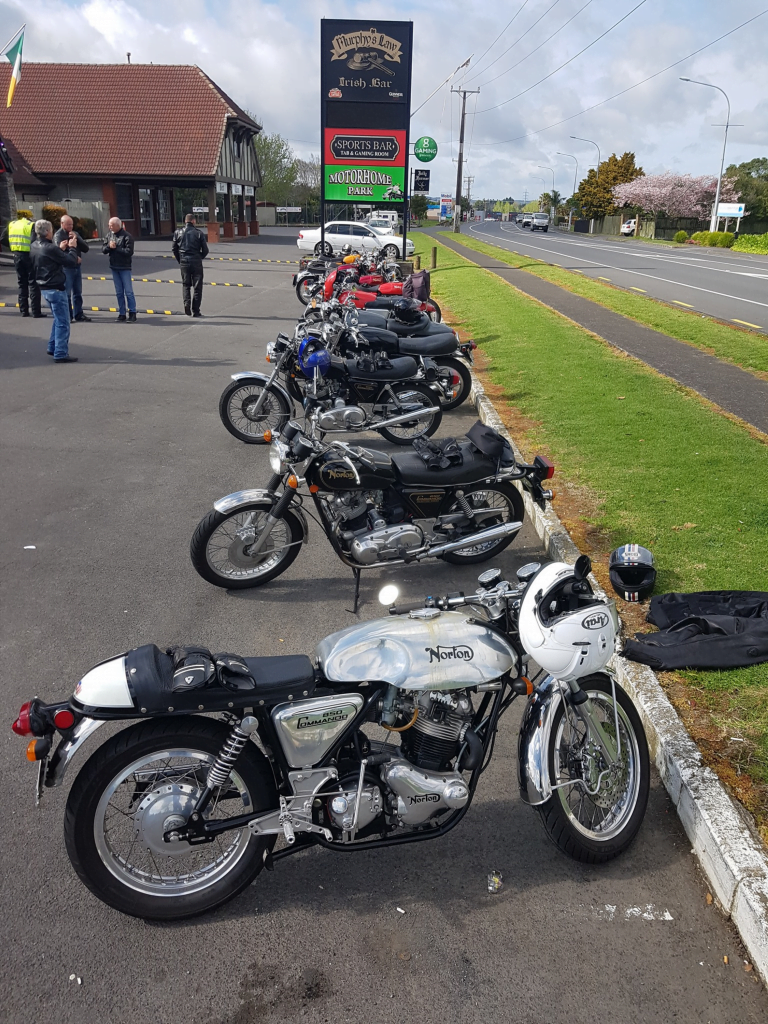
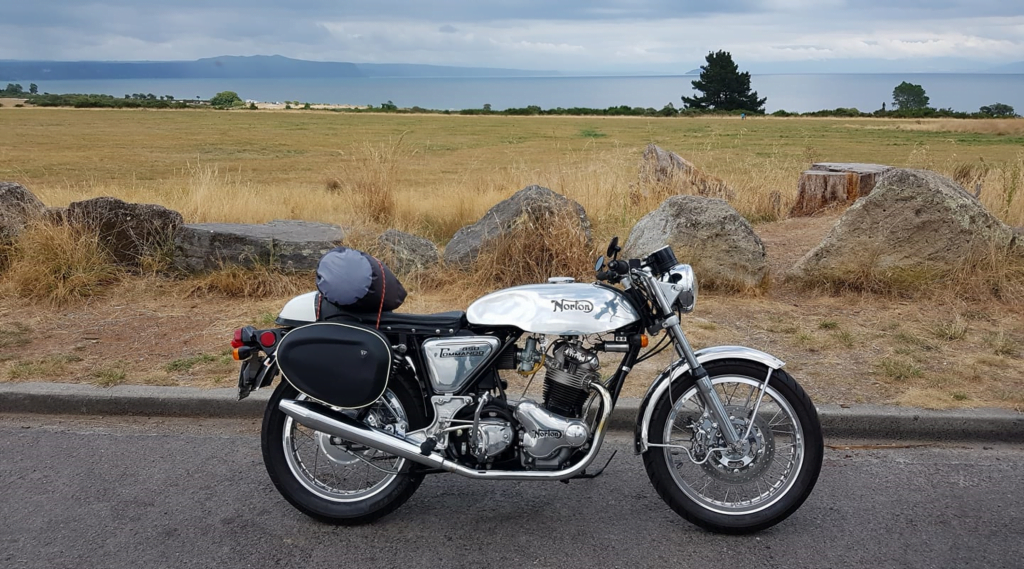




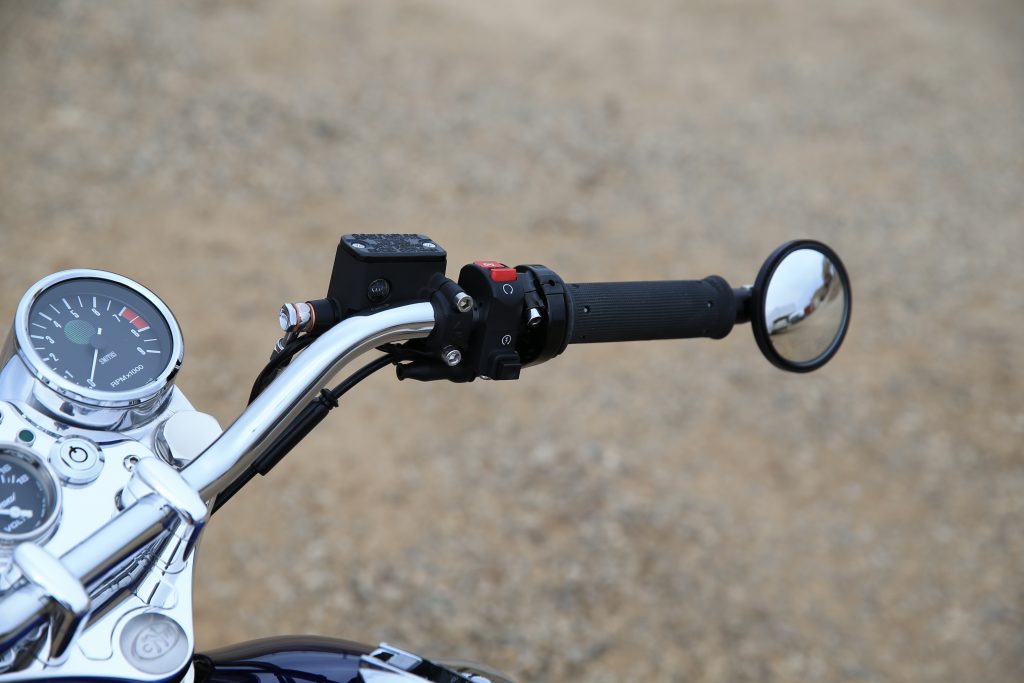
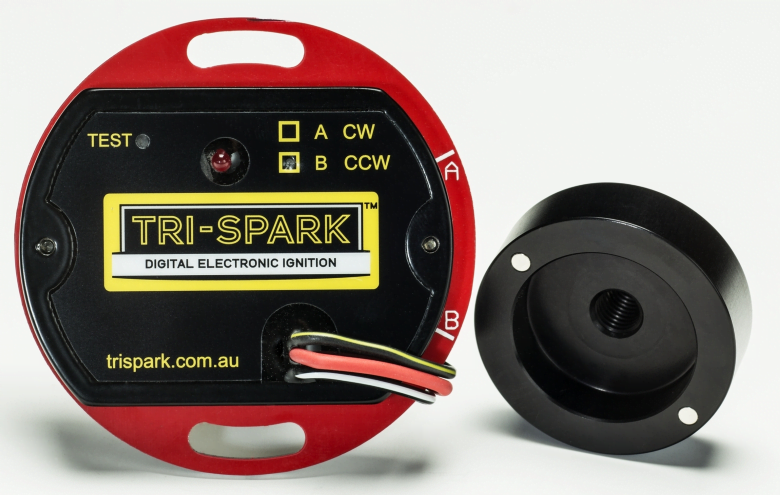
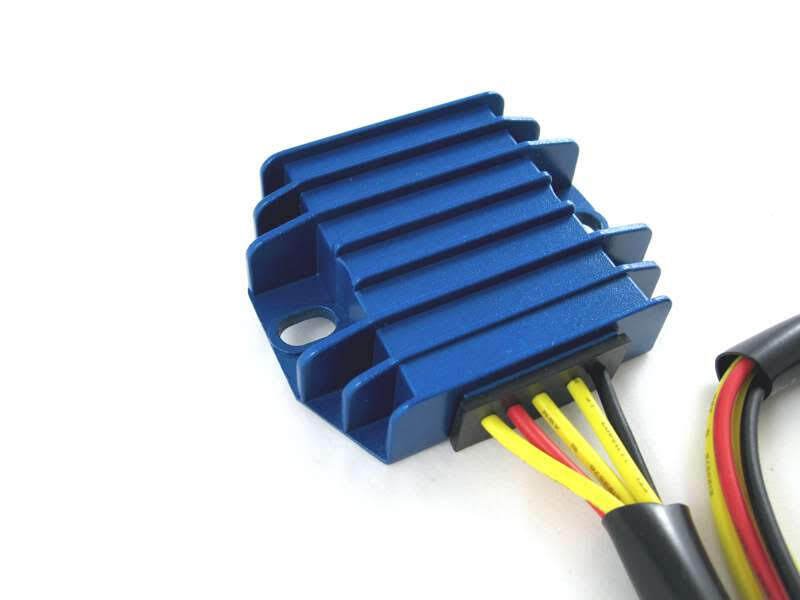

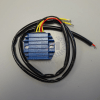



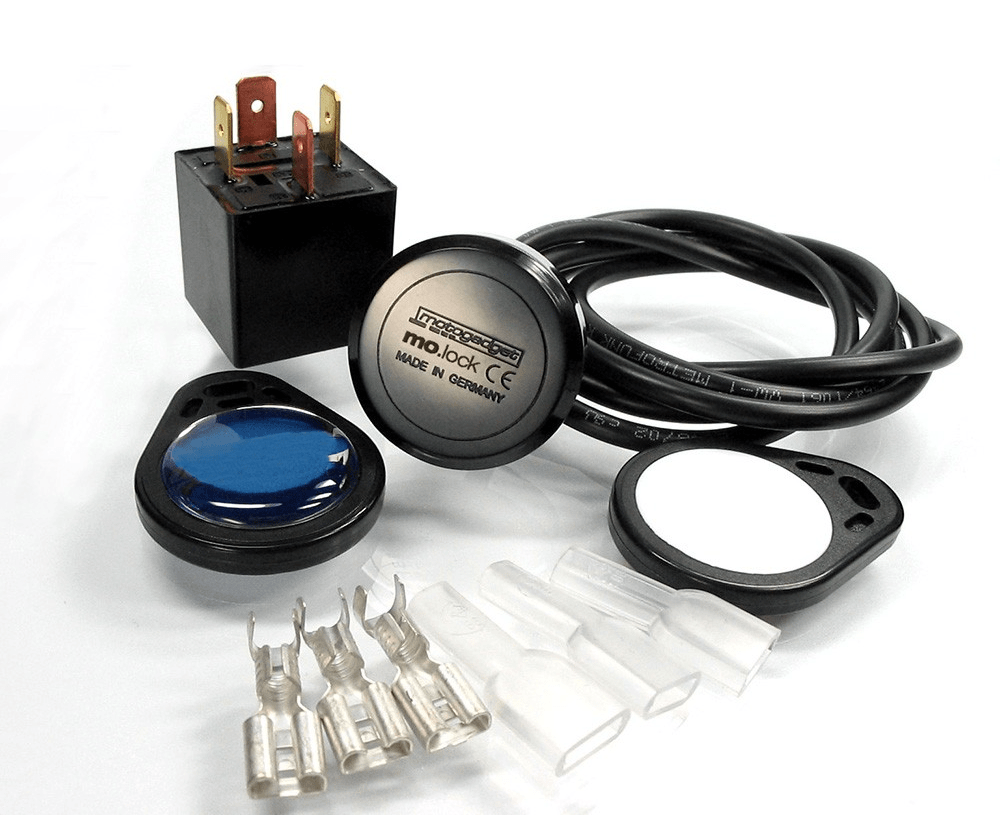
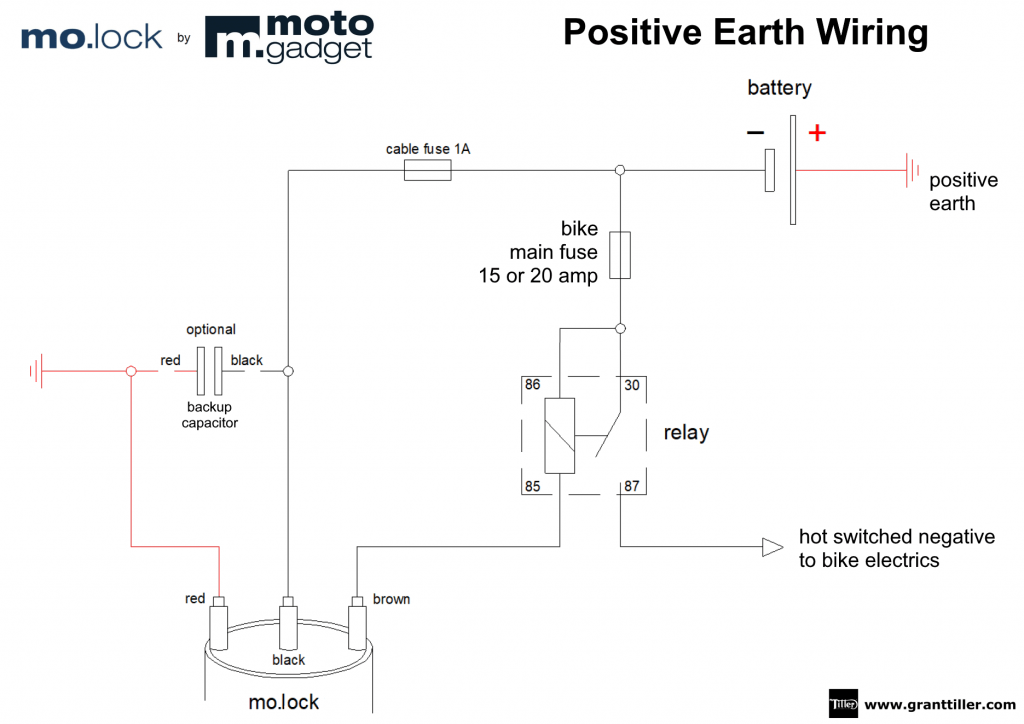
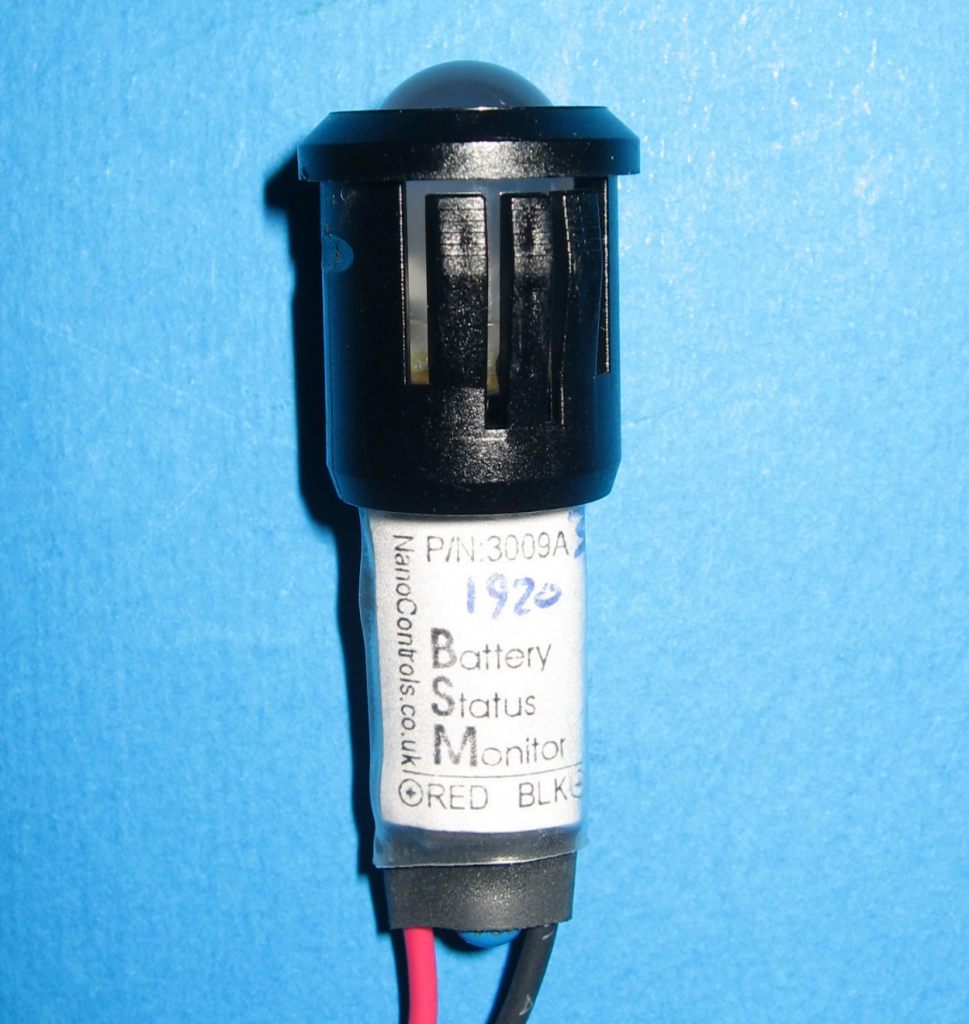
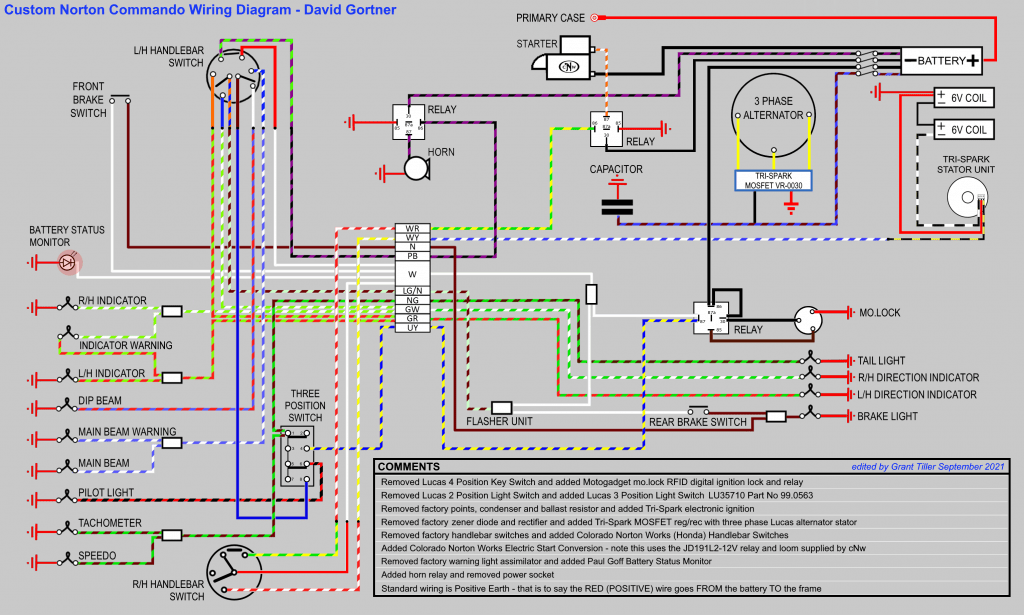
Thanks for the nice write up, and for creating the diagrams for me, very helpful! Cheers, David
That was a fun one David!
Great bike, and lots of choice upgrades on it!
Do I still need to connect the red wire on the head steady/motor after connecting the tri-spark directly to the positive pole on the coil.
I have also fitted an alloy head steady.
Hi John,
You should see red wires that go back into the harness that runs along the spine of the bike.
Make sure you connect to this, at that is your main positive feed from the battery.
Hi Grant – I have got a question for you regarding wiring a Holley Retrobright LED headlamp I purchased. I was told I could wire it up correctly for neg ground just using female H4 pigtail connector, but it turns out the headlamp unit is polarity sensitive.
Is there anyway to redo the wiring to/from the left cluster and the two way switch to get the polarity to the light correct without too much drama? Happy to add an extra wire or two and a fuse if needed.
Cheers, David
Morning David – great to hear from you and I hope you’re doing well!
Yes, the Holley Retrobright units are negative earth only unfortunately.
You have two decent options though to move you forward:
1) we can wire your headlight to be fed from two miniature relays – like you’ve done with your horn.
that way, the switch gear will simply switch on and off the relays, which means the instrument lighting, the tail light and the three-way switch in the headlight bucket won’t have to be touched.
The downside to this is that when energised, the relays will consume as much power as the headlights and with two more electromagnets on your bike, it will become quite “electrically noisey”
I personally feel that that are enough relays on your bike already.
2) your other option, and thinking about it more and more, probably my favourite one for you would be a phase inverter also known as a polarity converter specifically for the headlight unit.
These are basically the same as a rectifier unit, with four SCRs which will effectively swap positive and negative polarities between the input and output.
They make these for H4 type headlamps already, so it would be a plug and play option for you.
https://www.panelhouse.com.au/p/negatively-switched-h4-headlight-conversion-wiring/W-LEDO.ADAPTER
These are not expensive either – I can see them on Amazon and eBay at between $10 and $20
Hope that helps!
Awesome! You’re the man! I’ve ordered one already. Winter is here in NZ and it is getting darker and darker. The old pre-focus lens has to go…